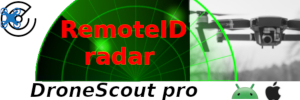D
Deleted member 103366
Guest
Nospampls, is it possible that " Aircraft unable to return to home automatically" means that in high winds the drone may be unable, in solely automatic flight, to fly fast enough, with respect to the air, to, with respect to the ground, move towards home ? i.e. if in automated RTH flight its maximum AIR SPEED is 20m/s and it is flying DIRECTLY into a head wind of 25m/s will it, as seen from the ground, be able to make headway towards the home point or will it be blown away from the home point at 5m/s.
Taken literally the above quote does not say that the RTH is disabled, it says the drone is not capable of returning home though, by implication, it will try.
With regards to the conversation with Vergel, the phrasing of their responses makes me think that English is not their first language, no offense intended to Vergel. If that is the situation then I think it is highly likely that subtle errors could arise in their understanding of what you were saying or asking and their understanding of the nuances of their answers.
Of course you could always test wether RTH is disabled etc. and take your drone out to a wide open space on a windy day or to some windy place, launch the drone, attached to a long and strong tether, and fly away from the homepoint to a suitable distance and then switch the controller off. If RTH is disabled at loss of connection in high winds then your drone will presumably not attempt to RTH and possibly be blown to the limit of the tether. I have held a Mavic Mini on a strong, nylon, sewing thread tether so would imagine it would be fairly easy to find something capable of holding an Mavic air 2. Personally I suspect you would find it tilts to try to RTH.
When failsafe RTH is 'discussed' in the manual I can find no explicit mention of RTH being disabled in high winds. It does however say " The aircraft may not be able to return to a Home Point when the wind speed is too high.", to me that implies that the drone will try to RTH but it may not succeed in making headway against high winds.
Taken literally the above quote does not say that the RTH is disabled, it says the drone is not capable of returning home though, by implication, it will try.
With regards to the conversation with Vergel, the phrasing of their responses makes me think that English is not their first language, no offense intended to Vergel. If that is the situation then I think it is highly likely that subtle errors could arise in their understanding of what you were saying or asking and their understanding of the nuances of their answers.
Of course you could always test wether RTH is disabled etc. and take your drone out to a wide open space on a windy day or to some windy place, launch the drone, attached to a long and strong tether, and fly away from the homepoint to a suitable distance and then switch the controller off. If RTH is disabled at loss of connection in high winds then your drone will presumably not attempt to RTH and possibly be blown to the limit of the tether. I have held a Mavic Mini on a strong, nylon, sewing thread tether so would imagine it would be fairly easy to find something capable of holding an Mavic air 2. Personally I suspect you would find it tilts to try to RTH.
When failsafe RTH is 'discussed' in the manual I can find no explicit mention of RTH being disabled in high winds. It does however say " The aircraft may not be able to return to a Home Point when the wind speed is too high.", to me that implies that the drone will try to RTH but it may not succeed in making headway against high winds.











